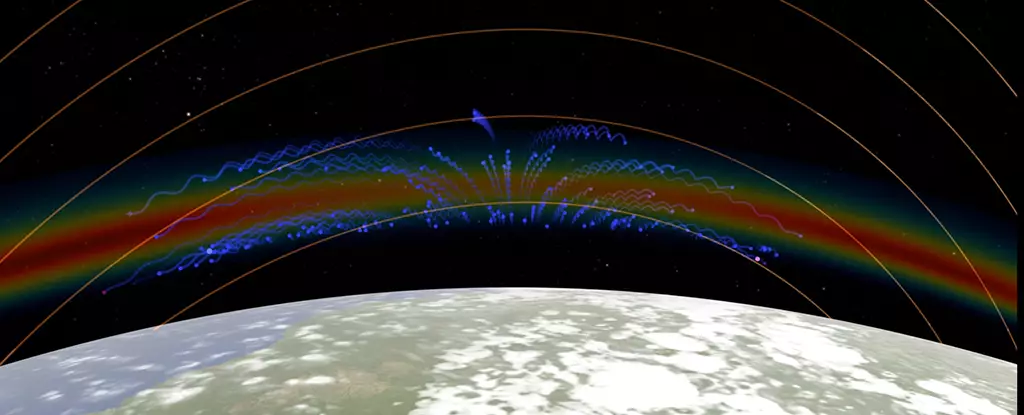NASA scientists have recently made a fascinating discovery in Earth’s ionosphere, revealing strange X and C shapes turning up in unexpected times and places. These shapes, formed by plasma bands of charged particles in the ionosphere, have been observed with the help of the Global-scale Observations of the Limb and Disk (GOLD) imaging instrument. This finding could potentially lead to improvements in space weather forecasts and radio communications.
While previous studies have shown merging crests forming X shapes after solar storms and volcanic eruptions, the data from this new study indicates that these shapes can also form during ‘quiet times’. This unexpected feature suggests that more localized factors are at play. According to ionosphere physicist Fazlul Laskar from the University of Colorado, earlier reports of merging shapes occurred only during geomagnetically disturbed conditions, making this new discovery particularly intriguing.
Another puzzling finding from the study is the appearance of C-shaped and reverse C-shaped bubbles in the plasma. These shapes are believed to be influenced by Earth’s winds, similar to how wind can shape the leaning of a tree. However, GOLD has captured images of these Cs forming surprisingly close together, pointing towards the involvement of more localized factors such as wind shear or tornadoes. While these tight packings of C shapes are currently rare, researchers are eager to delve deeper into understanding what causes them in the ionosphere.
Plasma in the ionosphere plays a crucial role in enabling radio waves to travel long distances, affecting communication and navigation systems like radio and GPS. Disruptions in the ionosphere, as observed in this study, could potentially impact these important infrastructure. By studying these phenomena, scientists hope to gain a better understanding of how radio and GPS technologies operate under varying conditions.
Advancements in Technology and Scientific Research
The study of the ionosphere and the intriguing shapes observed within it highlight the importance of constantly evolving technology and innovative scientific research. As astrophysicist Jeffrey Klenzing from NASA’s Goddard Space Flight Center points out, the dynamics of Earth’s atmosphere are proving to be more complex than previously expected. The ongoing advancements in technology and scientific research are key to unraveling the mysteries of Earth and the Universe.
The discovery of alphabet soup-like shapes in Earth’s ionosphere opens up new possibilities for improving space weather forecasts and communication technologies. By delving deeper into these phenomena, scientists are expanding our understanding of the complex dynamics at play in Earth’s atmosphere.

Leave a Reply